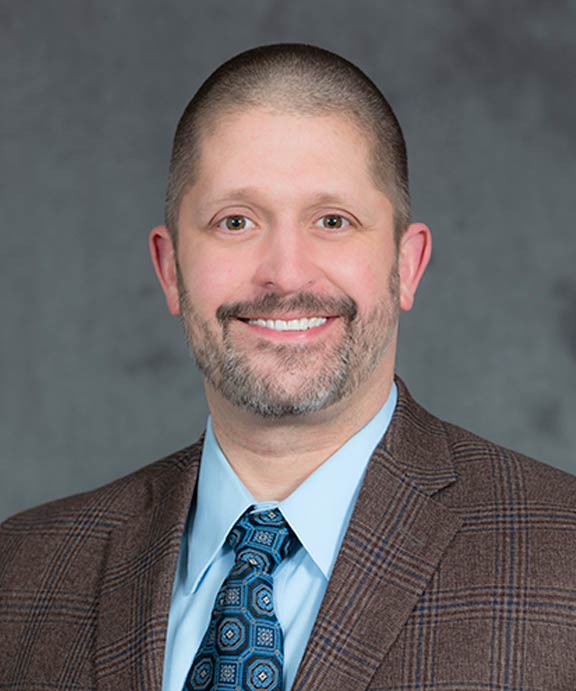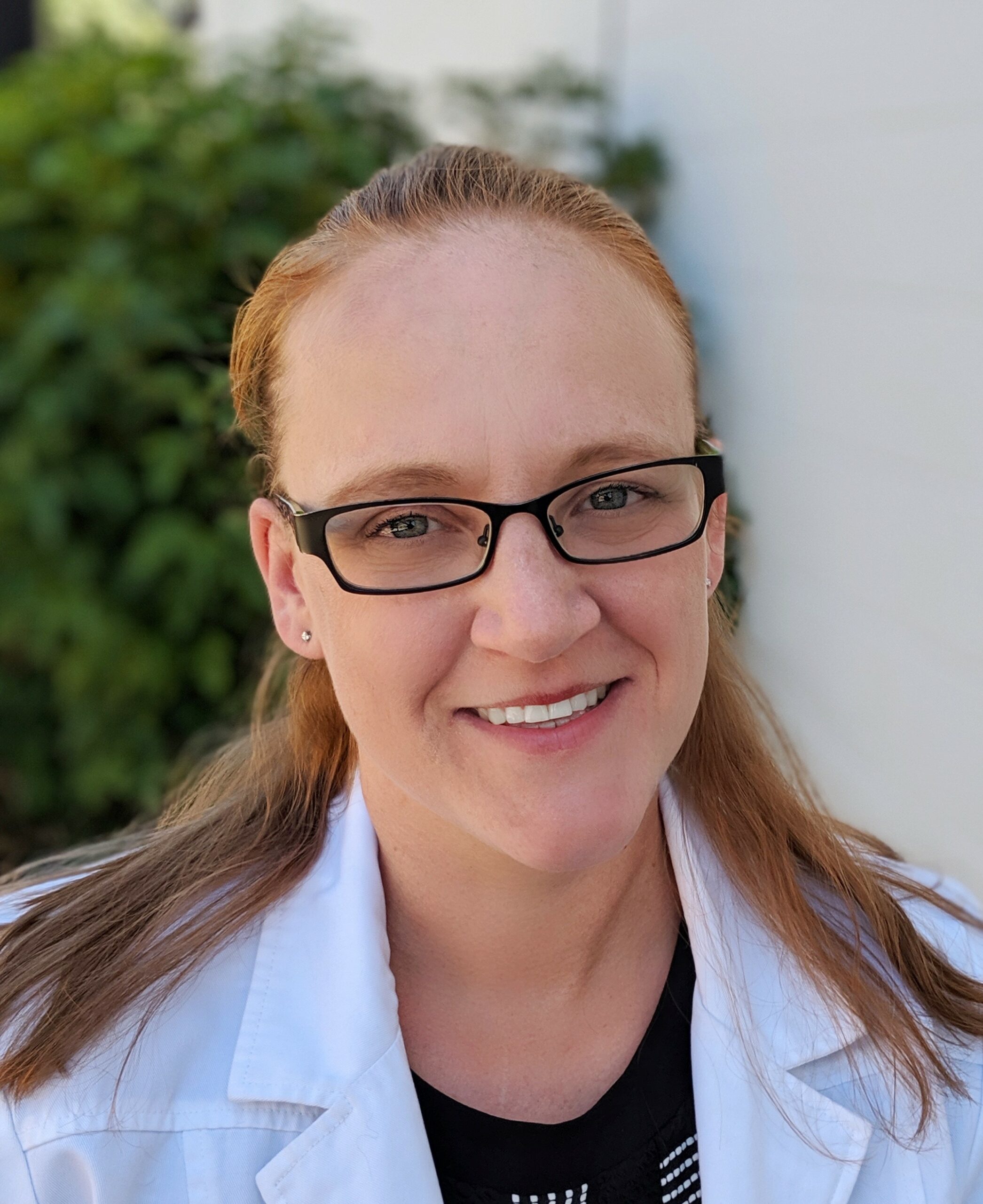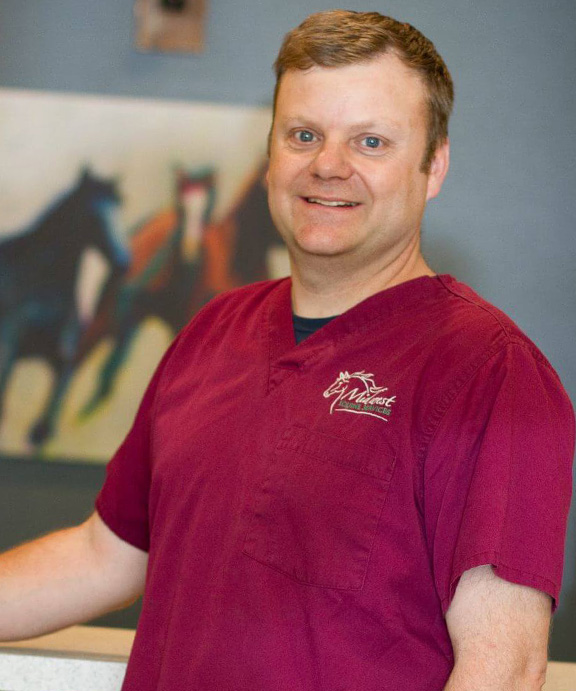Leadership
Board of Directors
The specific objectives of the College are:
A. Promote advancement and recognition of high standards in the art and science of veterinary dentistry.
B. Establish and manage a veterinary dental specialist certifying agency for veterinarians who are able to show that they excel in the practice of veterinary dentistry by successfully completing a training program approved by the College and passing an examination conducted by the College.
C. Promote recognition of the advanced skills provided by College-certified veterinarians to other veterinarians and to the general public.
D. Encourage investigations and contributions to the literature in the field of veterinary dentistry.
E. Cooperate with other organizations working to improve practice standards and methods in the field of veterinary dentistry and veterinary medicine in general.
Officers

Dr. Bonnie Shope
PRESIDENT
Sept. 2022 – Sept. 2024

Dr. Jennifer Rawlinson
PAST PRESIDENT
Sept. 2022 – Sept. 2024

Dr. Susan E. Crowder
SECRETARY
Sept. 2019 – Sept. 2025

Dr. Christopher Snyder
PRESIDENT-ELECT
Sept. 2022 – Sept. 2024

Dr. Cleet Griffin
EQUINE REPRESENTATIVE
Sept. 2022 – Sept. 2024

Dr. John R. Lewis
ABVS REPRESENTATIVE

Dr. Christopher Smithson
TREASURER
At Large Board Members

Dr. Maria Soltero-Rivera
MEMBER-AT-LARGE
Oct. 2021 – Sept. 2024

Dr. Alice Sievers
MEMBER-AT-LARGE
Oct. 2023 – Sept. 2026

Dr. Kendall Taney
MEMBER-AT-LARGE
Sept. 2022 – Sept. 2025

Jennifer Oberle
EXECUTIVE DIRECTOR
May 2024
AVDC® Standing Committees
All Board members and College members that serve on committees are unpaid volunteer positions. The College President, with the consent of the Board of Directors, shall appoint the Chair and members of committees. The College would thank those members that serve our College and donate many, many hours to the betterment of veterinary dentistry through support of advanced training for residents, education, improving practice standards, and in turn, the welfare of animals.
AVDC® Administration

Dr. Christopher Smithson
CHAIR
Dr. Kristin M. Bannon
Dr. Bonnie Shope
Dr. Christopher Snyder
AVDC® Appeals

Dr. Ian J. Haws
CHAIR
Dr. Stanley Blazejewski
Dr. Robert Campbell
Dr. Curt Coffman
Dr. Eric M. Davis
Dr. David L. Foster
Dr. Colin E. Harvey
Dr. Larry W. Kimberlin
Dr. Kevin Stepaniuk
Dr. Kristin Walker
Constitution & By-Laws

Dr. Dr. Susan Crowder
CHAIR
Dr. Steven Holmstrom
Dr. Jennifer Rawlinson
Dr. Bonnie Shope
Maintenance of Certification

Dr. Katherine Block
CHAIR
Dr. Kirk Hermann
Dr. Naomi Hoyer
Dr. Olivia James
Dr. G.G. Comet Riggs
Nominations

Dr. Bonnie Shope
CHAIR
Dr. David Clarke (past-past-President)
Dr. Stephanie Goldschmidt
Dr. Barden Greenfield
Dr. Jennifer Rawlinson (past-President)
Dr. Kevin Stepaniuk
Advocacy

Dr. Naomi Hoyer
CHAIR
Dr. Jamie Anderson
Dr. Stephanie Goldschmidt – Past Chair
Dr. Jessica Hunt
Dr. Leah Limone
Dr. Mary Krakowski Volker
Dr. Maria Soltero-Rivera – Past Chair, AVDC® BOD Liaison
Fiscal and Audit

Dr. Jennifer Rawlinson
CHAIR
Dr. Susan Crowder
Dr. Bonnie Shope
Dr. Chris Smithson
Dr. Chris Snyder
Diversity, Equity & Inclusion

Dr. Todd McCoy
CHAIR
Dr. Graham Thatcher, Co-Chairperson
Dr. Angelica Bebel
Dr. Mary Buelow
Dr. Katherine KlingDr. Ching Ching Shirley Kot
Dr. Da Bin Lee
Dr. Maria Littles
Dr. Crystal Loh
Dr. Alice Sievers, AVDC® BOD Liaison
Nomenclature

Dr. Matthew Lemmons
CHAIR
Dr. Boaz Arzi
Dr. Robert Baratt
Dr. Jan Bellows
Dr. Jerome D’Astous
Dr. Jan Schreyer
Equine Specialty Executive

Dr. Cleet Griffin
CHAIR
Dr. Robert M. Baratt, Past Chair
Dr. Jack Easley
Dr. Travis Henry
Dr. Jennifer E. Rawlinson
Dr. Jeffrey Reiswig
Dr. Molly Rice
Small Animal Credentials

Dr. Jennifer Alterman
CHAIR
Dr. Mary Buelow
Dr. Connie Durand
Dr. Angus Fechney
Dr. Judy Force
Dr. Alice Goodman
Dr. Kirsten Hailstone
Dr. Django Martel, Past Chair
Dr. Gary L. Modrcin
Dr. Ana Nemec
Dr. Kevin Ng, Chair Designate
Dr. Matthew Raleigh
Dr. Erin Ribka
Dr. Curt Ritchie
Dr. Kelly Saverino
Dr. Amy J. Somrak
Dr. Jennifer Tjepkema
Dr. Ignacio Velazquez-Urgel
Equine Credentials

Dr. Travis Henry
CHAIR
Dr. Nicole du Toit
Dr. Rob Pascoe
Dr. Jennifer E. Rawlinson
Small Animal Examination Committee

Dr. Chad Lothamer
CHAIR
Dr. Alex Adrian
Dr. Sam Babbitt
Dr. Kris Bannon
Dr. Angelica Bebel
Dr. Kate Block, Chair Designate
Dr. Ann Bolek
Dr. Angela Briggs
Dr. Heather L. Duncan
Dr. Emily Edstrom, Past Chair
Dr. Matthew Evans
Dr. Kristina Feigin
Dr. Lisa Fink, Past Chair
Dr. Kevin Haggerty
Dr. Kirk Herrmann
Dr. Naomi Hoyer, Past Chair
Dr. Michael Jennings, Past Chair
Dr. William Kellner
Dr. Katherine Kling
Dr. Chad LothamerDr. Scott E. MacGee
Dr. Jennifer Montebello
Dr. Brenday Mulherin, Past Chair
Dr. Erich Rachwitz
Dr. Jessica Riehl
Dr. Amy Rossi
Dr. Chris Sauve
Dr. Chris Snyder, Past Chair, AVDC® BOD Liaison
Dr. Cindy Vaca
Dr. Kendall Taney, Past Chair
AVDC® OMFS Fellowship Oversight

Dr. Sandra Manfra Maretta
CHAIR
Dr. Ana Castejon Gonzalez
Dr. Santiago Peralta
Dr. Alexander M. Reiter
Dr. Bonnie Shope – Board Liason
OMFS Founding Fellows
Dr. Boaz Arzi
Dr. Randy Boudrieau
Dr. Nadine Fiani
Dr. Colin E. Harvey
Dr. Gary C. Lantz
Dr. John R. Lewis
Dr. Sandra Manfra Marretta
Dr. Santiago Peralta
Dr. Alexander M. Reiter
Dr. Mark M. Smith
Dr. Christopher J. Snyder
Dr. Jason W. Soukup
Dr. Peter Southerden
Dr. Frank J. M. Verstraete
Small Animal Training Support Committee (TSC)

Dr. Roxane MacLellan
CHAIR
Dr. Michael Balke
Dr. Melissa Blazevich
Dr. Angela Briggs
Dr. Laura CaneverDr. Han Chia
Dr. Daniel ClaytonDr. Danny DeRose
Dr. Brian Hewitt
Dr. Lorraine HiscoxDr. Deborah Hodesson
Dr. Melanie Hunt
Dr. Jessica Johnson
Dr. Mallory Kanwal, Chair ElectDr. Kristin Linder
Dr. Maria Littles
Dr. Crystal LohDr. Jessica Mack
Dr. Danielle Mendelsohn, Past ChairDr. Tiffany Menke
Dr. Lisa Mestrinho
Dr. Regan Morris
Dr. Adriana Regalado
Dr. Kristin Iglesias ScottDr. Suzy Shannon
Dr. Alice Sievers, AVDC® BOD Liaison
Dr. Amy Thompson
Equine Training Support Committee

Dr. Apryle Horbal
CHAIR
Dr. Ian Bishop
Dr. Jon Gieche
Dr. Cleet Griffin
Dr. Leah Limone
Dr. Nicola Pusterla
Zoo & Wildlife
Oversight

Dr. Douglas Winter
CHAIR
Dr. Clarence Sitzman
Dr. Nadine Fiani
Dr. Ed Eisner
Dr. Steve Holmstrom
Zoo & Wildlife Dentistry Certificate Holders
Dr. Kristin M. Bannon
Dr. Jan E. Bellows
Dr. David E. Clarke
Dr. Stephen V. Coles
Dr. Edward R. Eisner
Dr. Roberto Fecchio
Dr. Nadine Fiani
Dr. Barron P. Hall
Dr. Steven E. Holmstrom
Dr. Loic F.J. Legendre
Dr. Michael Lowder
Dr. Clarence G. Sitzman
Residency Program Administration Committee

Dr. Curtis Stiles
CHAIR
Dr. Molly Angel
Dr. Susan Crowder, AVDC® BOD Liaison
Dr. Stephanie Goldschmidt
Dr. Travis Henry
Dr. Scott MacGee, Past ChairDr. M.J. Redman
Dr. Kristin Scott
Dr. Alice Sievers

Dr. Ellen Lowery
DIRECTOR
Dr. Jamie G. Anderson
Dr. Mary Berg
Dr. Lisa Fink
Dr. William V. Krug
Dr. Helena Kuntsi
Dr. Matthew Lemmons
Dr. Ana Nemec
Dr. Alexander M. Reiter
Dr. Laurie Serfilippi
Equine Training Support (TSS)

Dr. Jeffrey D Reiswig
CHAIR
Dr. Cleet Griffin
Dr. Apryle Horbal
Dr. Leah Limone
Dr. Nicole Pusterla
Equine
Examination

Dr. Richard Tanner
CHAIR
Dr. Robert Baratt
Dr. James Carmalt
Dr. Cleet Griffin
Dr. Louise Marron
Dr. Nicola Pusterla
Dr. Molly Rice, Past Chair
Residency Education Committee

Dr. Milinda Lommer
CHAIR
Dr. Nadine Fiani, Past Chair
Dr. Jerzy Gawor
Dr. Alexander Geddes
Dr. Lorraine Hiscox
Dr. Olivia JamesDr. Inshil Kim
Dr. Rebecca Martin
Dr. Milinda LommerDr. Amelie McAndrews
Dr. Kevin Ng
Dr. Santiago Peralta
Dr. Lindsey Schneider
Dr. Christopher Snyder
Dr. Maria Soltero-Rivera
Dr. Jason Soukup
Dr. Peter Strøm
Dr. Mary Volker
OMFS Fellowship Exam Committee

Dr. Kendall Taney
CHAIR
Dr. Nadine Fiani
Dr. Christopher Snyder
Policy on responsible breeding practices to ensure quality of life and promote overall health and well being.
The AVDC® recognizes that many breeds in each species (e.g., canine, feline, and lagomorph) have particular genetic tendencies that predispose them to potential maxillofacial or respiratory irregularities. While this is not a total representation of each breed, one must consider all aspects of either genetic or acquired pathology when choosing a pet. It is recommended that any future pet owner consider discussing potential breed-related problems with their family veterinarian or specialist. While these recommendations may be beneficial in the overall understanding of a breed with either a genetic or acquired tendency, the AVDC® as an organization does not have a general policy regarding this topic.
The AVDC® has relied on individual Diplomates to provide valuable evidence based medical recommendations for current and future pet owners to consider. The AVDC® does encourage responsible breeding practices that result in anatomy and conformation that limits impediments to the animal’s quality of life and promotes overall health and well being.
Adopted by the Board of Directors, January 2019
Download PDF ↓
The Use of Antibiotics in Veterinary Dentistry
The AVDC® endorses the use of systemic antibiotics in veterinary dentistry for treatment of some infectious conditions of the oral cavity. Although culture and susceptibility testing is rarely performed on individual patients that have an infection extending from/to the oral cavity, the selection of an appropriate antibiotic should be based on published data regarding susceptibility testing of the spectra of known oral pathogens.
Patients that are scheduled for an oral procedure may benefit from pre-treatment with an appropriate antibiotic to improve the health of infected oral tissues, however a full course treatment is always recommended.
Bacteremia is a recognized sequela to dental scaling and other oral procedures.
Healthy animals are able to overcome this bacteremia without the use of systemic antibiotics. However, use of a systemically administered antibiotic is recommended to reduce bacteremia for animals that are immune compromised, have underlying systemic disease (such as certain clinically-evident cardiac disease (sub-aortic stenosis), or severe hepatic or renal disease) and/or when severe oral infection is present. Antibiotics should never be considered a monotherapy for treatment of oral infections, and should not be used as preventive management of oral conditions.
Adopted by the Board of Directors, April 2005, revised April 2019
Download PDF ↓
Veterinary Dental Healthcare Providers
Veterinary Dental Healthcare Providers
The American Veterinary Dental College® (AVDC® ) has developed this position statement as a means to safeguard the veterinary dental patient and to ensure the qualifications of persons performing veterinary dental procedures.
Primary responsibility for veterinary dental care
The AVDC® defines veterinary dentistry as the art and practice of oral health care in animals other than humans. It is a discipline of veterinary medicine and surgery. The diagnosis, treatment, and management of veterinary oral health care is to be provided and supervised by licensed veterinarians or by veterinarians working within a university or industry.
Who may provide veterinarian-supervised dental care
The AVDC® accepts that the following health care workers may assist the supervising veterinarian in dental procedures or perform professional dental cleanings (cleaning the surfaces of the teeth with an ultrasonic scaler and/or hand tools and polishing the teeth with pumice or flouride paste while the patient is under anesthesia) while under direct supervision by a veterinarian if permitted by local law: licensed, certified or registered veterinary technician or a veterinary assistant with advanced dental training, a human dentist, or registered dental hygienist.
Operative dentistry and oral surgery
The AVDC® considers operative dentistry to be any dental procedure which invades the hard or soft oral tissue including, but not limited to, a procedure that alters the structure of one or more teeth or repairs damaged and diseased teeth. Only a veterinarian should perform operative dentistry and oral surgery.
Extraction of Teeth
The AVDC® considers the extraction of teeth to be included in the practice of veterinary dentistry. Decision making is the responsibility of the supervising veterinarian, with the consent of the pet owner, when electing to extract teeth. Only veterinarians shall determine which teeth are to be extracted and perform extraction procedures.
Dental Tasks Performed by Veterinary Technicians
The AVDC® considers it appropriate for a veterinarian to delegate maintenance dental care and certain dental tasks to a veterinary technician. Tasks appropriately performed by a technician include professional dental cleanings and certain procedures that do not result in altering the shape, structure, or positional location of teeth in the dental arch. The veterinarian may direct an appropriately trained veterinary technician to perform these tasks providing that the veterinarian is physically present and supervising the treatment.
Veterinary Technician Dental Training
The AVDC® supports the advanced training of veterinary technicians to perform additional ancillary dental services: taking impressions, making models, charting veterinary dental pathology, taking, and developing dental radiographs, performing non-surgical subgingival root scaling and periodontal debridement, provided that they do not alter the structure of the tooth.
Further the AVDC® does not support Diplomates training non-licensed veterinarians, veterinary assistants, or veterinary technicians to perform oral surgery, including surgical extraction techniques.
Tasks that may be performed by veterinary assistants (not registered, certified, or licensed)
The AVDC® supports the appropriate training of veterinary assistants to perform the following dental services: supragingival scaling and polishing, taking and developing dental radiographs, directly assisting the veterinarian in oral surgical and dental procedures, and making impressions and models.
Tasks that may be performed by human dentists, registered dental hygienists and other dental health care providers
The AVDC® recognizes that human dentists, registered dental hygienists and other dental health care providers in good standing may perform those procedures for which they have been qualified under the direct supervision of the veterinarian. The supervising veterinarian will be responsible for the welfare of the veterinary patient and any treatment performed on the patient.
The AVDC® understands that individual states have regulations that govern the practice of veterinary medicine. This position statement is intended to be a model for veterinary dental practice and does not replace existing law.
Adopted by the Board of Directors April 1998, revised October 1999, revised September 2006, revised 2022
AVMA Summary Report by State – Authority of veterinary technicians and other non-veterinarians to perform dental procedures
Link to AVMA Summary Report by State – Scope of Practice: Complementary and alternative veterinary medicine and other practice act exemptions
Download PDF ↓
Companion Animal Dental Scaling Without Anesthesia
® In the United States and Canada, only licensed veterinarians can practice veterinary medicine. Veterinary medicine includes veterinary surgery, medicine and dentistry. Anyone providing dental services other than a licensed veterinarian, or a supervised and trained veterinary technician, is practicing veterinary medicine without a license and shall be subject to criminal charges.
This position statement addresses dental scaling procedures performed on pets without anesthesia, often by individuals untrained in veterinary dental techniques. Although the term Anesthesia-Free Dentistry has been used in this context, AVDC® prefers to use the more accurate term Non-Professional Dental Scaling (NPDS) to describe this combination.
Owners of pets naturally are concerned when anesthesia is required for their pet. However, performing NPDS on an unanesthetized pet is inappropriate for the following reasons:
1. Dental tartar is firmly adhered to the surface of the teeth. Scaling to remove tartar is accomplished using ultrasonic and sonic power scalers, plus hand instruments that must have a sharp working edge to be used effectively. Even slight head movement by the patient could result in injury to the oral tissues of the patient, and the operator may be bitten when the patient reacts.
2. Professional dental scaling includes scaling the surfaces of the teeth both above and below the gingival margin (gum line), followed by dental polishing. The most critical part of a dental scaling procedure is scaling the tooth surfaces that are within the gingival pocket (the subgingival space between the gum and the root), where periodontal disease is active. Because the patient cooperates, dental scaling of human teeth performed by a professional trained in the procedures can be completed successfully without anesthesia. However, access to the subgingival area of every tooth is impossible in an unanesthetized canine or feline patient. Removal of dental tartar on the visible surfaces of the teeth has little effect on a pet’s health, and provides a false sense of accomplishment. The effect is purely cosmetic.
3. Inhalation anesthesia using a cuffed endotracheal tube provides three important advantages… the cooperation of the patient with a procedure it does not understand, elimination of pain resulting from examination and treatment of affected dental tissues during the procedure, and protection of the airway and lungs from accidental aspiration.
4. A complete oral examination, which is an important part of a professional dental scaling procedure, is not possible in an unanesthetized patient. The surfaces of the teeth facing the tongue cannot be examined, and areas of disease and discomfort are likely to be missed.
Safe use of an anesthetic or sedative in a dog or cat requires evaluation of the general health and size of the patient to determine the appropriate drug and dose, and continual monitoring of the patient. Veterinarians are trained in all of these procedures. Prescribing or administering anesthetic or sedative drugs by a non-veterinarian can be very dangerous, and is illegal. Although anesthesia will never be 100% risk-free, modern anesthetic and patient evaluation techniques used in veterinary hospitals minimize the risks, and millions of dental scaling procedures are safely performed each year in veterinary hospitals.
To minimize the need for professional dental scaling procedures and to maintain optimal oral health, the AVDC® recommends daily dental home care from an early age. This should include brushing or use of other effective techniques to retard accumulation of dental plaque, such as dental diets and chew materials. This, combined with periodic examination of the patient by a veterinarian and with dental scaling under anesthesia when indicated, will optimize life-long oral health for dogs and cats. The AVDC® supports the Guidelines of safe administration of general anesthesia to animals for dental procedures as outlined by the American College of Veterinary Anesthesiology and Analgesia (ACVAA) found at https://acvaa.org/
For general information on performance of dental procedures on veterinary patients, please read the AVDC® Position Statement on Veterinary Dental Healthcare Providers, which is available on the AVDC® web site (www.AVDC®.org). For information on effective oral hygiene products for dogs and cats, visit the Veterinary Oral Health Council web site (www.VOHC.org).
For further information, send an e-mail message to the AVDC® Executive Director (ExecSec@AVDC®.org).
Adopted by the Board of Directors, April 2004
Download PDF ↓
Removal or Reduction of Teeth as a Treatment for Canine or Feline Aggression
When presented with an aggressive animal case where other corrective measures have failed (including but not limited to behavior modification including medical/pharmacologic intervention) the veterinarian at his/her discretion may recommend full mouth extraction, crown reduction (to the gingival margin) or euthanasia.
AVDC® understands that removal of crowns of teeth may be necessary in selected cases.
Full mouth extraction is an invasive procedure. Oral surgical techniques that minimize trauma must be used, and post-operative radiographs must be taken. Effective anesthetic techniques, monitoring, and pre and post-operative pain control measures must be used.
It must be understood that removal or reduction of teeth as a treatment for canine or feline aggression will not absolutely prevent injury (of physical and/or psychological nature) to people or to other animals.
Adopted by the Board of Directors, October, 2009, revised April 2019
Download PDF ↓
Crown Amputation in Sled Dogs
Since 1996 when The American Veterinary Dental College® Board of Directors ratified their position statement against the amputation (‘cutting’) of canine teeth in sled dogs, not much has changed. Some 27 years later this procedure is still felt to be inhumane and inappropriate as it does not eliminate the potential to cause harm with biting. As importantly, the procedure of grinding or “cutting” down the crown may be very painful for sled dogs and will likely result in infection and death of the tooth. Proper methods such as vital pulp therapy or full -root canal therapy under general anesthesia and with appropriate analgesia are successful procedures to reduce the crown height of a tooth. These procedures are best performed by specialists such as AVDC® diplomates. The current Board of Directors encourages all veterinarians practicing veterinary dentistry to say “no” to inappropriate extraction or treatment of healthy teeth, and to use modern techniques with appropriate anesthesia, analgesia, and dental radiography.
Adopted by the Board of Directors October 2023
Download PDF ↓
Orthodontic Procedures
Orthodontics involves the diagnosis and treatment of abnormalities (malocclusion) of alignment of teeth and jaws. The goal of orthodontic procedures in companion animals is to provide the animal with a functional, comfortable, and stable occlusion. A complete conscious oral examination, including assessment of the occlusion of an animal, should be evaluated at all veterinary examinations. Documentation of the animal’s occlusion and any necessary treatment or intervention should be discussed with the animal’s owner. Malocclusions require timely treatment, typically within the first 6-8 weeks to 12 months of an animal’s life. Treatment options for malocclusions are varied, and frequently necessitate specialized treatment. Orthodontic treatments require a particular and specific skill set as well as advanced experience, thus they should be performed by a Board Certified Veterinary Dentist™ or a veterinarian with equivalent specialist training. Similar to other procedure recommendations, the risk vs. benefit of each orthodontic treatment option and its potential complications, recovery, follow-up, and monitoring should be reviewed with the animal’s owner. The American Veterinary Dental college (AVDC®)® supports the American Veterinary Medical Association (AVMA) policy regarding surgery or procedures performed on animals intended to be shown, raced, bred, or sold as breeding animals (see below). Orthodontic treatment should not be unduly withheld based on neuter status, however. Sufficient client counseling regarding the potential for an animal’s genetic propagation of undesirable occlusal traits is required and strongly recommended prior to performing any orthodontic treatment. Orthodontic treatment should not be pursued for cosmetic purposes only.
AVMA: Performance of surgical or other procedures in any species for the purpose of concealing genetic defects in animals to be shown, raced, bred, or sold as breeding animals is misleading to the public and is unethical. However, should the health or welfare of the individual patient require correction of such genetic defects, it is recommended that the patient be rendered incapable of reproduction.
Adopted by the Board of Directors October 2023
Download PDF ↓
Position on Large Animal Dentistry
The practice of dentistry is an integral branch of professional veterinary practice. This discipline encompasses all aspects of the evaluation, diagnosis, prognosis, treatment, and prevention of any and all diseases, disorders, and conditions that affect the teeth, oral cavity, mandible, maxillofacial area, and the adjacent and associated structures. Additionally, dentistry includes the evaluation of the presentation and contribution of systemic diseases within the oral cavity and the contribution of oral conditions to the overall health of the individual animal. Companion animals, equines, livestock, and exotic species all have oral and dental needs that are included in the practice of veterinary medicine.
Any surgical procedure of the head or oral cavity; the administration or prescription of sedatives, tranquilizers, analgesics or anesthetics; procedures which are invasive of the tissues of the oral cavity including, but not limited to, removal of sharp enamel points, treatment of malocclusions of premolars, molars, canine teeth and incisors, odontoplasty, the extraction of first premolars and deciduous premolars and incisors; extraction of damaged or diseased teeth; treatment of diseased teeth via restorations or endodontic procedures; periodontal and orthodontic treatments; dental radiography and endoscopy of the oral cavity are veterinary dental procedures and should be performed by a licensed veterinarian.
In states where the Veterinary Practice Act allows, the AVDC® supports the use of licensed veterinary technicians under the employ and immediate supervision of licensed veterinarians for specific and appropriate veterinary dental procedures as enumerated in that state’s practice act.
